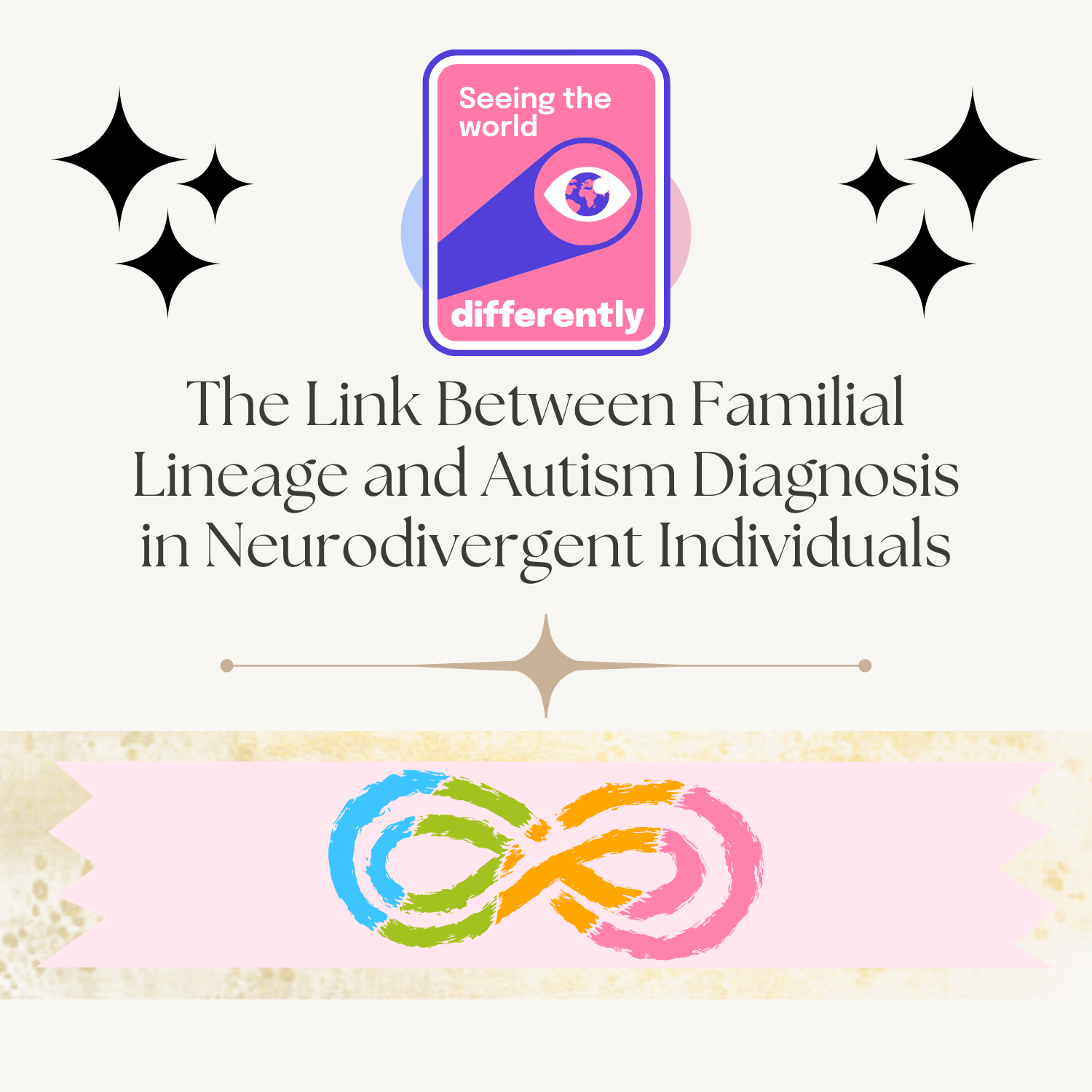Introduction
As I embark on understanding my upbringing and emotional regulation issues, I am reminded of how much we, as older millennials, are discovering about neurodivergence. New research is shedding light on how autism and other neurodivergent traits have been overlooked or misunderstood, particularly in families with a history of these conditions.
For many neurodivergent individuals, especially those with autism, the path to diagnosis can be long and fraught with challenges. Women, in particular, often excel at "masking" or hiding their traits to fit into societal expectations. This is made even more complex for those with a family history of neurodivergence, where behaviors are often dismissed as "quirky" or "genetic."
Autism in Both Sides of the Family
When neurodivergent traits appear on both sides of the family, distinguishing between quirky family habits and neurodivergence becomes complicated. In previous generations, behaviors that now may be recognized as neurodivergent were often accepted as "just how our family is." With a deeper understanding of autism, we now see that these traits may be signs of a broader genetic and environmental pattern.
Signs and Symptoms of Autism in Families That May Be Brushed Off
- Tics/Repetitive Behaviors: Behaviors such as hand-flapping or rocking are often written off as nervous ticks but may be signs of neurodivergence.
- Communication Struggles: Struggles with communication, such as misunderstanding sarcasm, difficulty maintaining conversations, or feeling overwhelmed in social settings, are frequently dismissed as introversion.
- Sensory Sensitivities: Sensory processing issues like heightened sensitivity to light, sound, and touch are common in neurodivergent individuals. However, when these sensitivities are seen across multiple family members, they are often brushed off.
- Emotional Dysregulation: Intense emotional responses, such as meltdowns or difficulty managing frustration, are frequently attributed to "family temperaments." However, these emotional reactions are often linked to underlying neurodivergent conditions.
How Misdiagnosis and Delayed Diagnosis Impacts Families
Misdiagnosis or delayed diagnosis of neurodivergent conditions can have profound effects on families. When neurodivergent traits are misunderstood or dismissed, individuals may struggle with self-esteem, social isolation, and emotional distress. These struggles are compounded when family members are unaware of the neurodivergent traits that run through the family, creating an environment where emotional needs go unmet.
- Self-Esteem Issues: Feeling different but unable to identify why can severely affect an individual’s self-image, particularly when "quirky" traits are passed off as family genetics rather than signs of neurodivergence.
- Social Struggles: Social struggles such as avoiding gatherings or withdrawing from social events are often attributed to introversion or burnout culture. However, these behaviors may be a response to sensory overload or difficulty in social situations, common in neurodivergent individuals.
- Relationship Strains: Misunderstood behaviors can strain family relationships. When neurodivergent traits are dismissed, family members may feel unsupported and alienated, which can result in deeper emotional rifts.
How to Break the Cycle: Seeking Proper Diagnosis
Recognizing neurodivergent traits early on and seeking a proper diagnosis is crucial in breaking the cycle of misdiagnosis or delayed diagnosis. Here’s how to approach this:
- Recognize Signs Early: Early intervention is essential for improving communication skills and emotional regulation.
- Seek Professional Help: A diagnosis from a trained professional, such as a psychologist or pediatrician, is essential for individuals seeking to understand their neurodivergent traits.
- Education and Support: Educating family members about neurodivergence is key to fostering an environment of understanding and support.
Common Neurodivergent Traits That Are Masked in Both Women and Men
Many neurodivergent traits are often masked, especially in women, who are skilled at adapting to social norms and expectations. However, these traits can also be masked in men, and recognizing them is key to providing proper support. Common masked traits include:
- Social Interaction Masking: Difficulty with eye contact, understanding body language, and maintaining conversations are often hidden in social settings to avoid drawing attention.
- Heightened Sensory Sensitivities: Sensory sensitivities, such as aversions to specific textures or sounds, are commonly masked in family settings, especially when multiple family members experience similar sensitivities.
- Emotional Regulation Difficulties: Suppressed emotional outbursts and mood swings are often masked, which can lead to emotional burnout.
- Repetitive Behaviors: Repetitive actions like hand-flapping, rocking, or specific routines are often minimized or hidden in family environments that do not recognize their connection to neurodivergence.
Traits Commonly Associated with Familial Autism (High and Low Functioning Autism)
Autism and other neurodivergent conditions often run in families. In both high-functioning autism (HFA) and low-functioning autism (LFA), certain traits tend to emerge, and these may be passed down through generations:
- Communication Challenges: Delayed speech development, difficulty understanding humor, and struggles with initiating conversations are common in familial autism.
- Social Challenges: Difficulty understanding social norms and forming peer relationships are prevalent in families with neurodivergence.
- Sensory Processing Issues: Over-sensitivity or under-sensitivity to sensory stimuli, such as sounds and textures, can cause significant stress and discomfort.
- Emotional Dysregulation and Behavior: Meltdowns and difficulties managing frustration are common in both HFA and LFA. These emotional responses can be exacerbated by sensory overload and environmental stressors.
